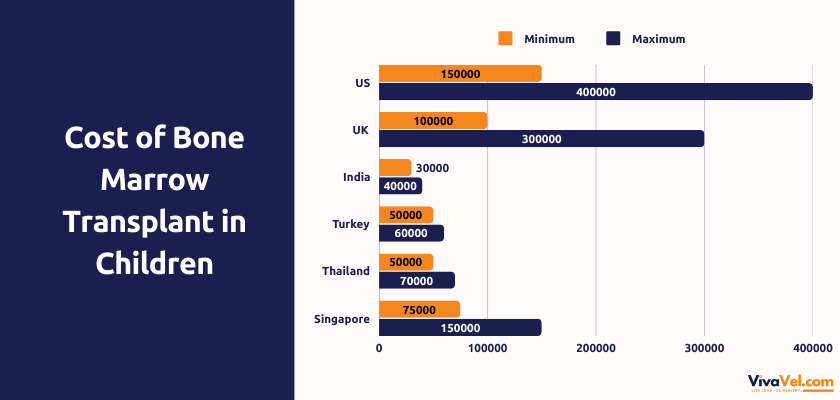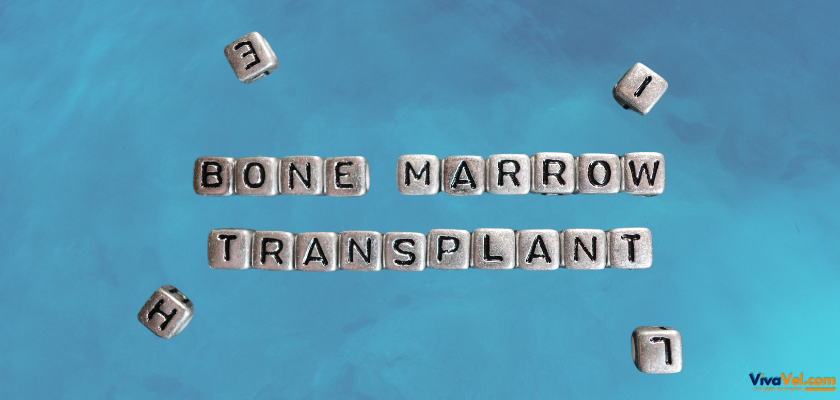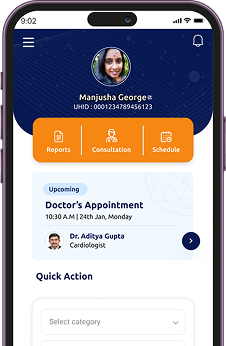Bone marrow transplant (BMT) is a life-saving procedure for children suffering from severe blood disorders, immune deficiencies, and certain types of cancers. While the procedure offers a chance for a new lease on life, it comes with significant financial implications. This blog delves into the cost of bone marrow transplants for children, exploring global cost comparisons, success rates, and factors influencing pricing.
What is a Bone Marrow Transplant?
A bone marrow transplant is a medical procedure that replaces damaged or diseased bone marrow with healthy stem cells to help the body produce new blood cells. It is commonly used to treat conditions such as:
Leukemia: Leukemia is a type of cancer that affects the blood and bone marrow, where blood cells are made. It causes the body to produce abnormal white blood cells, which can crowd out healthy cells and make it harder to fight infections, control bleeding, and carry oxygen. Treatment options include chemotherapy, radiation, targeted therapy, and sometimes a bone marrow transplant.
Lymphoma: Lymphoma is a type of cancer that affects the lymphatic system, which is part of the body's immune system. It occurs when white blood cells called lymphocytes grow abnormally and form tumors, often in the lymph nodes, spleen, or bone marrow. Common symptoms include swollen lymph nodes, fatigue, unexplained weight loss, and night sweats, but many types of lymphoma are treatable, especially if caught early.
Thalassemia: Thalassemia is a genetic disorder that reduces the body's ability to produce enough healthy red blood cells and hemoglobin, leading to anemia. Symptoms can range from mild fatigue to severe complications requiring regular blood transfusions. It is inherited from parents and is more common in regions like the Mediterranean, South Asia, and the Middle East.
Sickle cell anemia: Sickle cell anemia is a genetic blood disorder where red blood cells become crescent-shaped instead of round, making it harder for them to carry oxygen and flow through blood vessels. This can cause pain, fatigue, and serious complications like organ damage or strokes. The condition is lifelong, but treatments like medications, blood transfusions, and bone marrow transplants can help manage symptoms.
Severe combined immunodeficiency (SCID): Severe Combined Immunodeficiency (SCID) is a rare, life-threatening genetic disorder that leaves babies with little to no immune defense, making them extremely vulnerable to infections. Often called "bubble boy disease," SCID prevents the body from fighting off even mild germs, which can become serious or fatal. Early diagnosis through newborn screening and treatments like bone marrow transplants or gene therapy can help affected children build a functioning immune system.
There are two primary types of BMT:
Autologous Transplant: An autologous transplant uses a patient's stem cells, which are collected, stored, and then returned after treatment.
Allogeneic Transplant: In an allogeneic transplant, stem cells come from a donor—this could be a sibling, parent, or even an unrelated match. The donor’s healthy stem cells help replace damaged or diseased cells in the patient’s body.
Cost of Bone Marrow Transplant in Different Countries
The cost of a bone marrow transplant varies significantly worldwide, influenced by factors such as medical infrastructure, the complexity of the procedure, the type of transplant, and post-operative care.
Cost Comparison Bar Graph
A visual representation can provide a clearer picture of the cost differences across these countries. Below is a bar graph illustrating the average costs:

Factors Influencing the Cost of Bone Marrow Transplant
Type of Transplant: Allogeneic transplants are generally more expensive than autologous transplants due to the need for donor matching and additional procedures.
Hospital and Infrastructure: Facilities with advanced medical technologies and highly skilled professionals may charge a premium.
Pre- and Post-Transplant Care: Diagnostics, chemotherapy, and long-term follow-up care costs can significantly increase the overall expense.
Donor Matching: Finding a suitable donor involves additional costs, especially in unrelated donor scenarios.
Geographical Location: The cost of living and healthcare standards in the country of treatment play a crucial role.
Success Rate of Bone Marrow Transplant in Children
The success of a bone marrow transplant largely depends on:
The underlying condition being treated
Patient’s health
Donor compatibility
Post-operative care
Success Rates by Condition
Leukemia: 60% - 90% depending on the stage
Thalassemia: Over 90% of well-matched donor cases
Sickle Cell Anemia: Around 85%
SCID: 90% and above with early diagnosis
Success Rate Bar Graph
The following bar graph compares success rates across various conditions:

Why Consider Medical Tourism for Bone Marrow Transplants?
Medical tourism is becoming popular for families seeking cost-effective and high-quality BMT procedures. Countries like India, Turkey, and Thailand are emerging as leading destinations, offering:
Affordable Costs: Significant savings compared to Western countries.
World-Class Facilities: Accredited hospitals with advanced technologies.
Expert Medical Teams: Highly qualified specialists in hematology and oncology.
Comprehensive Care: Support for international patients, including visa assistance, accommodation, and translation services.
India as a Preferred Destination
India stands out due to its affordable costs and excellent medical services. Key highlights include:
Accredited hospitals like Apollo Hospitals, Fortis Healthcare, and Medanta.
A vast pool of experienced hematologists and oncologists.
Advanced diagnostic and therapeutic facilities.
How VivaVel Health Tourism Can Help
At VivaVel Health Tourism, we understand that a bone marrow transplant is a significant decision for any family. Our team is dedicated to providing:
Customized Treatment Plans: Tailored to your child’s medical needs and budget.
Hospital Selection: Partnerships with leading hospitals worldwide.
Complete Support: Assistance with travel, accommodation, and post-treatment care.
Transparent Pricing: Clear and detailed cost breakdowns.
Final Thought:
A bone marrow transplant is a critical procedure that offers hope and a new beginning for children battling severe medical conditions. While the costs can be daunting, understanding the pricing structure and exploring options like medical tourism can make the treatment more accessible. With proper planning and support from organizations like VivaVel Health Tourism, families can ensure the best care for their children without compromising quality.
If you’re considering a bone marrow transplant for your child, reach out to VivaVel Health Tourism for expert guidance and support.





















